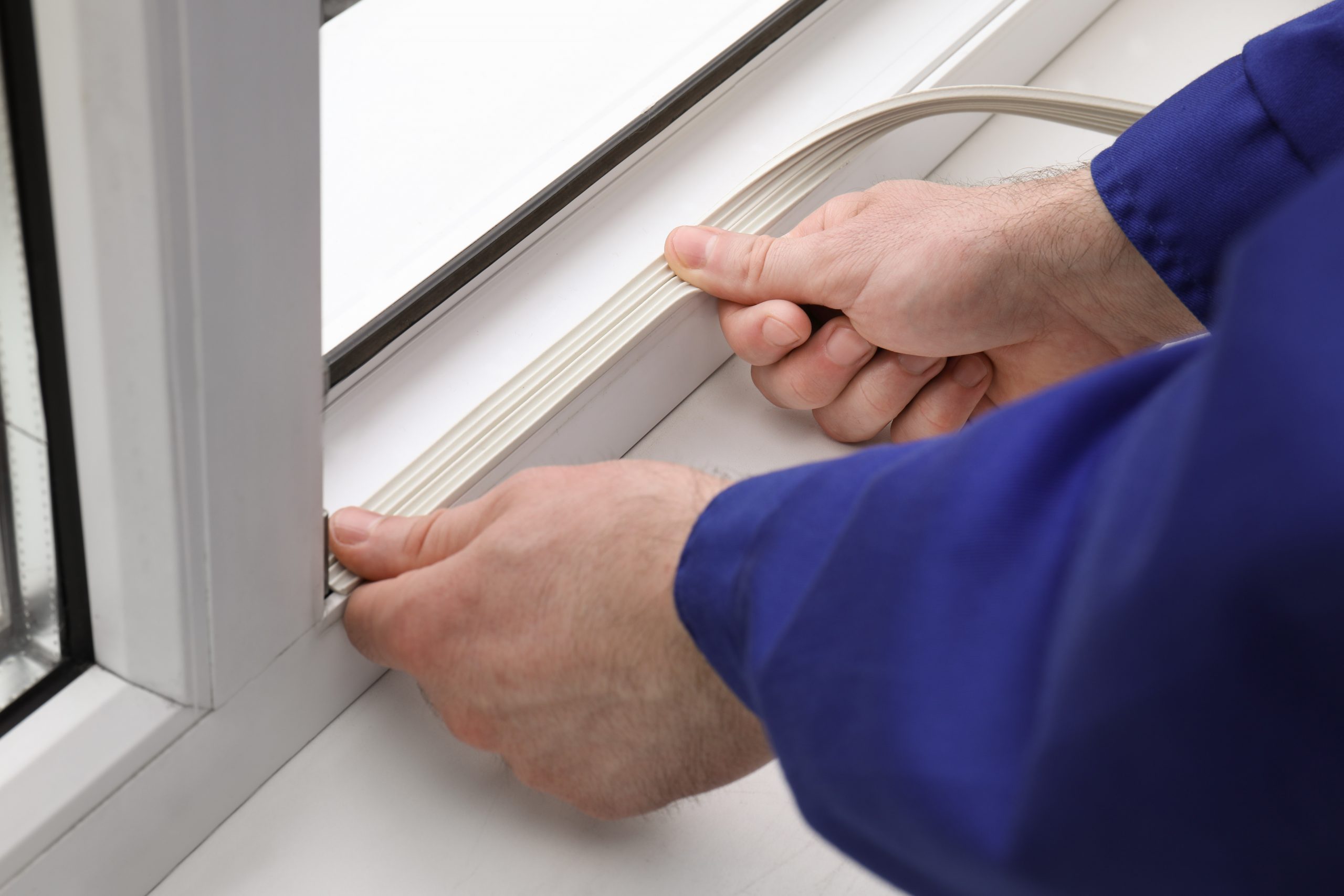A wooden floor can make a real design statement in any home. But there is always the risk of causing damage to it – not least if it’s a “high-traffic” space. Of course, it’s bad enough to live with a scuff, stain, or scratch. And it can be even worse if you’re thinking about capitalising on the current UK house price boom – and had high hopes that your wooden floor would be a key attraction to potential buyers. So, what practical steps can you take to look after a wood floor?
If you are in the process of selecting a high quality flooring solution, why not look explore Amtico at Lees Furnishers? They boast a wide range of styles and some of the most competitive prices.
The universal appeal of a wooden floor
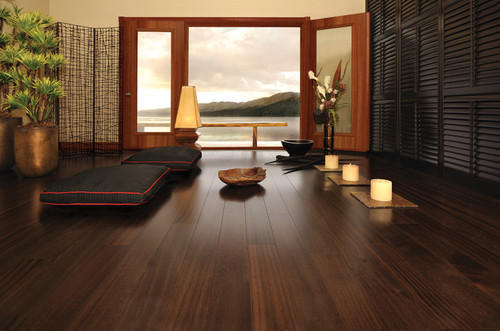
source: pinterest.com
The appeal of a wooden floor in your home can’t be overlooked. And it comes in many forms – covering aesthetic appearance, durability, and ongoing upkeep. That’s not to say that you can install a wood floor and leave it indefinitely. Too much can go wrong, and you could end up having to cover it up with a carpet if it gets damaged.
One of the big benefits of a wooden floor is the various types you can choose from. Put simply, you can reflect your tastes as you see fit – from laminate to solid wood, oak or maple. It’s also thought that a hardwood floor can pay back what you spend on it too. In addition, it is tough – so can be trusted to serve you well long into the future… if it’s looked after properly.
Steps you can take to care for your floor
Sweep and clean often…
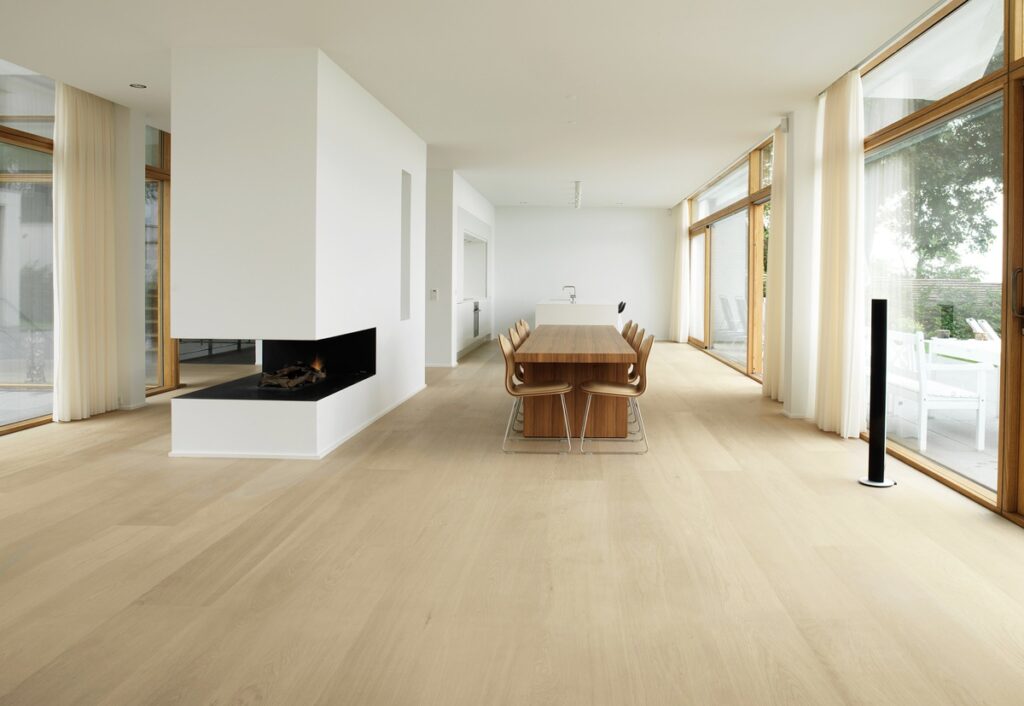
source: pinterest.com
This step sounds like a given. After all, few people savour the prospect of returning home to a filthy living room, kitchen, or bedroom. The reason why sweeping is an essential step is down to the fact that it removes any debris that gets carried into the room. If this gets disturbed as you move around, it can act as a type of sandpaper, eroding the surface of your flooring.
… but avoid mopping!
The use of a vacuum cleaner or brush can be perfect for the job. A mop? Not so much. With a sopping wet mop, there’s a real risk that excess moisture can permeate the wood in ways that can be unseen. The outcome can be disfiguration of the wood, which can undermine the floor’s integrity. One option instead of a mop, however, could be to use a microfibre cloth.
Use protective paint or oil
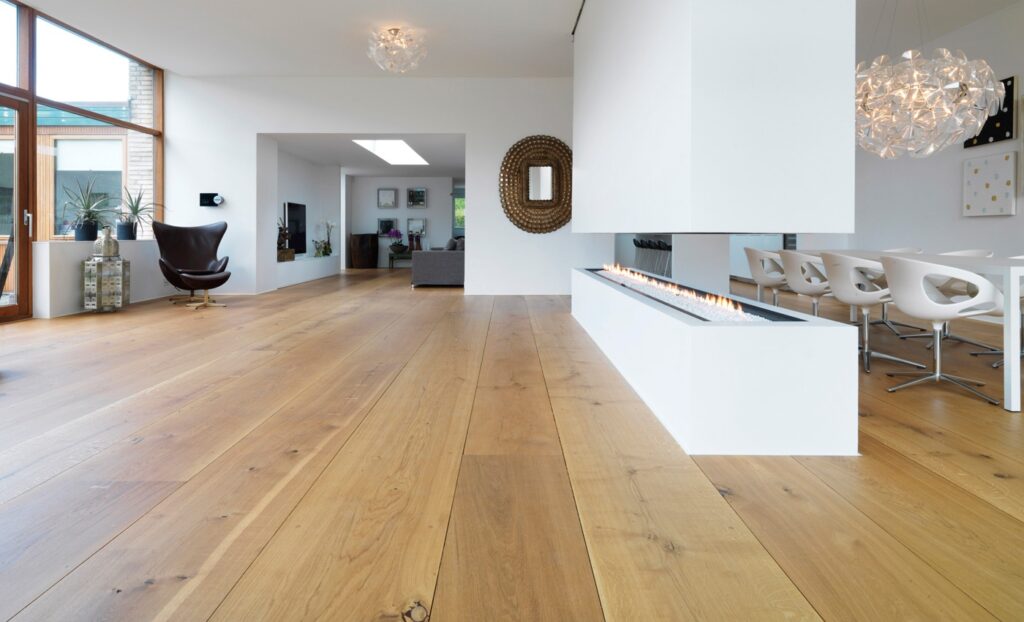
source: pinterest.com
Just like you would take care of wooden garden fencing or furniture, your internal flooring can be preserved. A layer of protective floor paint – such as hard wax oil – can create a robust and reliable barrier from the worst excesses your floor may be subjected to. As a result, it helps to extend the lifespan of your floor. It can also give the floor a real sparkle in the process.
Take off your shoes
Not so confident at DIY or cleaning activities that can help protect your floor? Don’t wear shoes around the house. It can be that simple. Your shoes are much more abrasive on your floor than socks or skin. And there’s the added risk of bringing in stones and other debris from outside that –as mentioned above – can scratch, chip, and stain the surface.
Prevent furniture damage
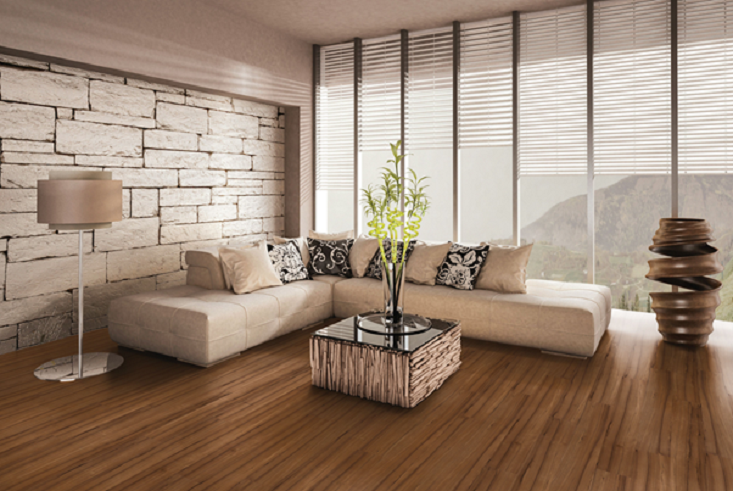
source: pinterest.com
Your wooden floor will likely be in a room with other furniture. Sofas, tables, beds, and other items of furniture can feature damage-inducing legs – especially when moved around. To counter this, consider putting a sticky felt pad on the bottom of each leg to reduce the impact.
Lay down a rug, mat, or runner
This isn’t an admission of defeat. A wooden floor can coexist perfectly happily with a fabric rug, mat, or runner. The two can complement each other quite nicely. But in practical terms, choosing to lay down something like a rug can benefit your wooden floor in the long run. It can prevent scuffs from furniture, feet, or other potential risks such as spillages.


